Amarone della Valpolicella is one of the world’s greatest red wines, made in the northeastern Italian region of Veneto not far from Verona, the pretty city of Romeo and Juliet.
It is an absolutely unique wine, that though much copied, remains, for a variety of reasons that I have already gone into considerable detail previously (see the award-winning book Italy’s Native Wine Grape Terroirs, published by University of California Press and available on Amazon and my upcoming Italian Wine Terroirs: A Journey through Italy’s Wine Production zones and their Wines, published by Amazon Press), essentially untouchable by any other Amarone-wannabe. This is because of the magical combination and interplay between various historically important and relevant factors (grape varieties, habitat, length of air-drying, presence/absence of noble rot, type of wood used to age the wine in, and others) that typify Valpolicella’s Amarone production area and qualify its wines in unique ways. You can certainly make decent, even good, wines by air-drying grapes elsewhere in Italy and the world, but Amarone remains (the better ones, at least) the benchmark by which all other such wines are measured by.
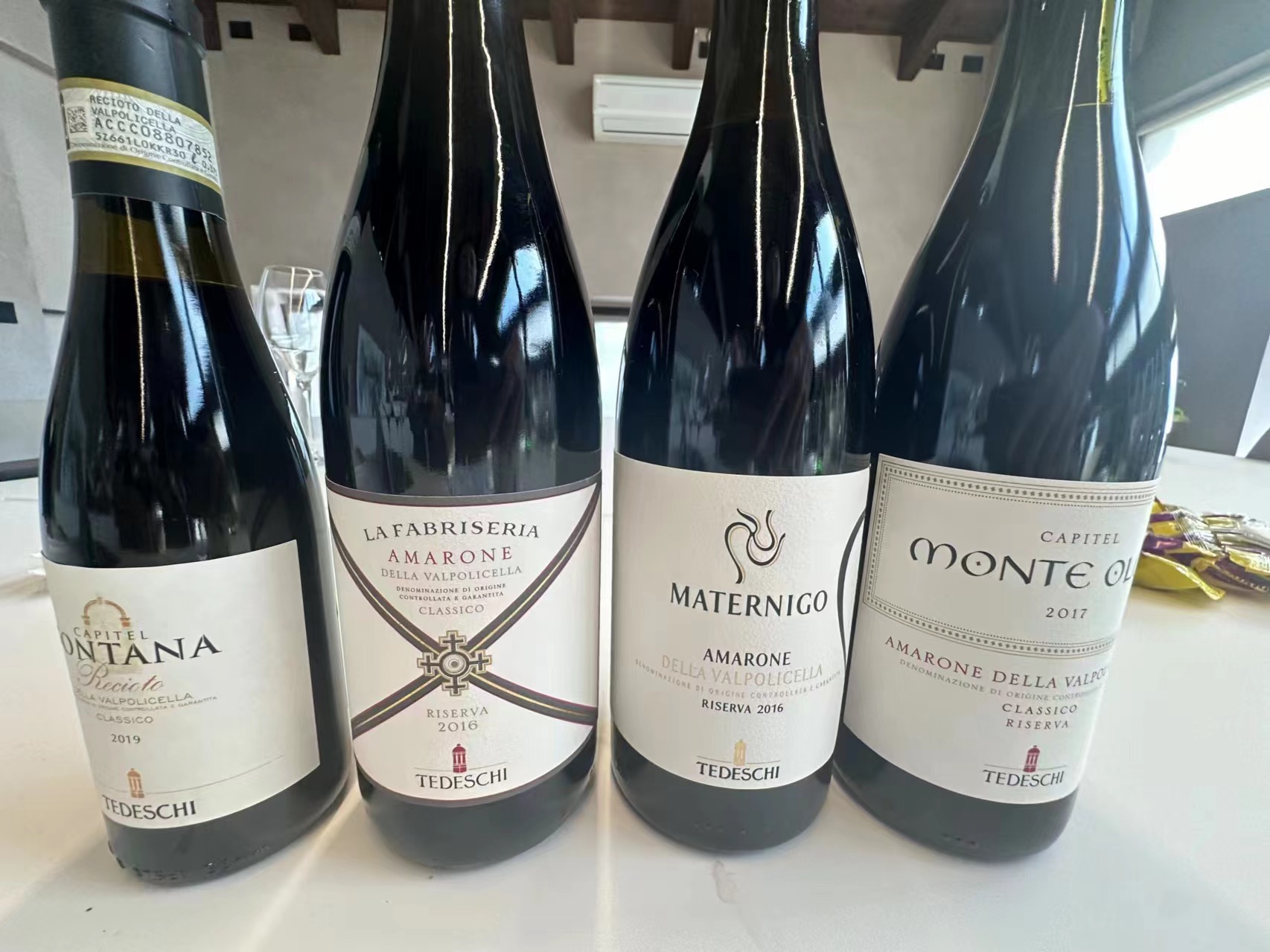
The Famiglie Storiche
The Famiglie Storiche is an association of high-quality Amarone producers (in fact, it can be successfully and easily argued that outside of a handful of wineries, all the best producers of Amarone are members of this association). The association was born in 2009, when ten of the leading Amarone producing estates decided to join forces and promote their wines in Italy and around the world in a different manner. Not surprisingly, a long legal dispute with the Consorzio ensued that was only resolved in 2023; about time too, given that such disputes don’t do anybody any good.
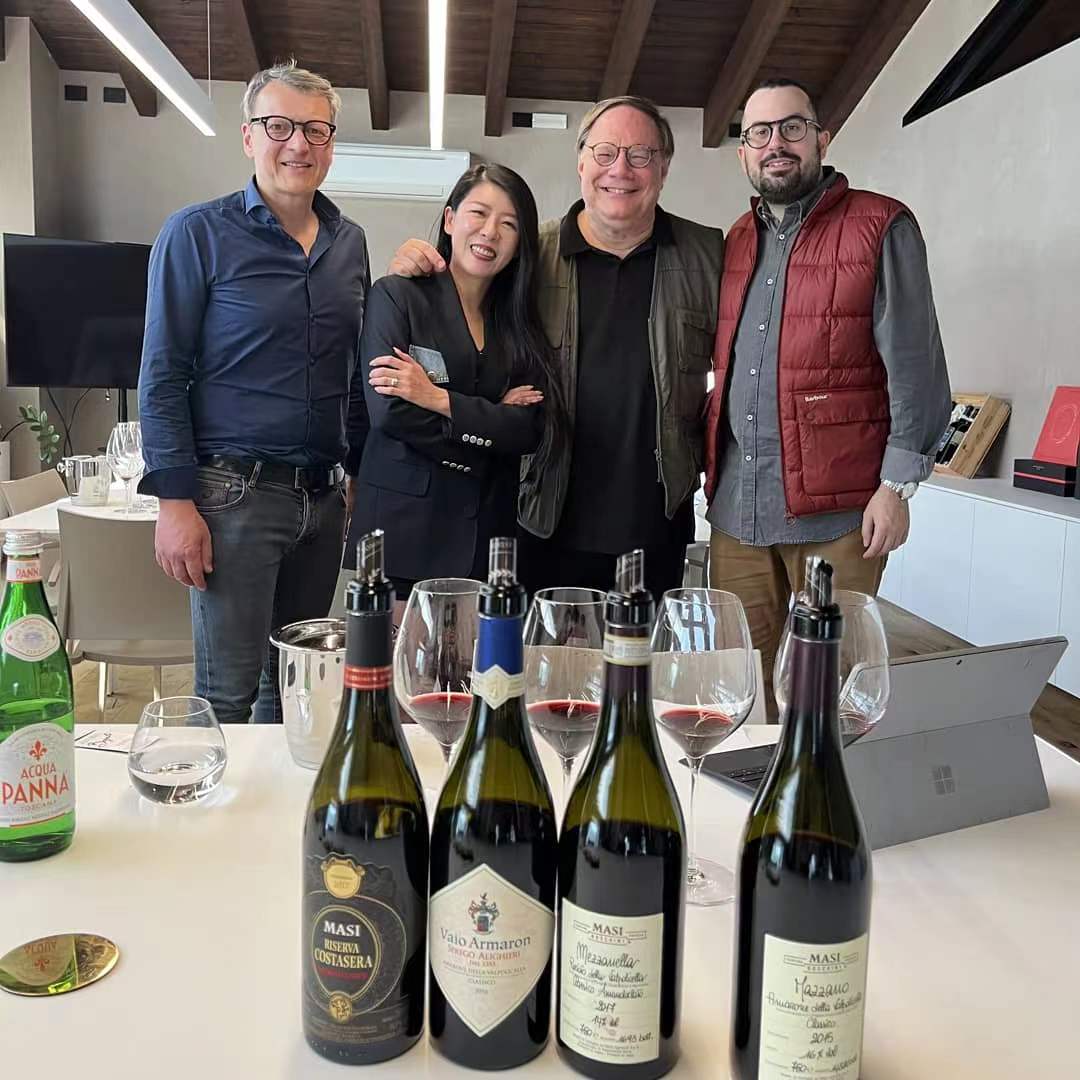
The Famiglie Storiche association now counts thirteen members. Altogether, this group accounts for around 22-23% of the total turnover of the denomination, managing around 800 hectares of vineyards dedicated to Amarone. The current President is Pierangelo Tommasi, who follows in the footsteps of Alberto Zenato; Tommasi’s Vice-Presidents are Giuseppe Rizzardi and Luca Speri of the Guerrieri-Rizzardi and Speri wineries, respectively. The Famiglie Storiche is also owner of the Antica Bottega del Vino in Verona, a restaurant that is world-famous and that traces its roots back to the sixteenth century. It is an unmissable meeting point for epicures and sybarites that visit Verona from all over the world. Its management team is also headed by members of the association: the current President is Sabrina Tedeschi of the Tedeschi estate (and past-President of the Famiglie Storiche), who follows Tiziana Castagnedi in this prestigious post. Francesco Allegrini is Tedeschi’s Vice-President, with Giacomo Boscaini and Antonio Cesari counsellors. Although the member wineries of the Famiglie Storiche are most associated with the production of high-quality Amarone, they produce all the typical wines of the Valpolicella area (and beyond, with many also bottling wines such as Lugana and Soave). Some of the most noteworthy Valpolicella wines and Recioto della Valpolicella of all are made by these estates.
Amarone della Valpolicella
Like Recioto, most Amarone today is made with a blend of Corvina (mostly), plus smaller percentages of Corvinone and Rondinella. Many producers also blend in even smaller percentages of Oseleta, Croatina, and Molinara. Still other grapes can find their way in the mix, especially when the wine is made from very old vines that still might harbor old plants of Rossignola, Forsellina, Turchetta and other grapes. The only grape variety that historically was an important part of the Amarone blend and that today has been pushed off to the side somewhat is Molinara: I have written extensively that I think this was, and is, a huge mistake, and so I will not harp on this futher. Suffice it to say that Molinara, a pink grape with large juicy berries, was uprooted out of the fear its inclusion in the Amarone blend would dilute the finished wine. Such fear was an inevitable consequence of the years when big, black, jammy wines were being scored highest (a situation that reached head-shaking levels when even producers of Bardolino, a light, easygoing red wine by definition, also uprooted Molinara in an effort to make a bigger wine). Molinara’s recognized strong points is that it adds noteworthy salinity, spiciness and drinkability to Amarone: small percentages of it make for a more balanced, nuanced, interesting wine. Is it also less powerful? Sure. But not all of us want to have to slice through our wines with a knife, or ladle them over hot buttered toast. In this day and age of climate change, where making wines with 16% alcohol is all too easy, and in which elegant and more drinkable wines are increasingly sought after, some producers are starting to rethink Amarone. And so, we might yet see the lovely Molinara grape variety make a comeback. It should have never disappeared in the first place.
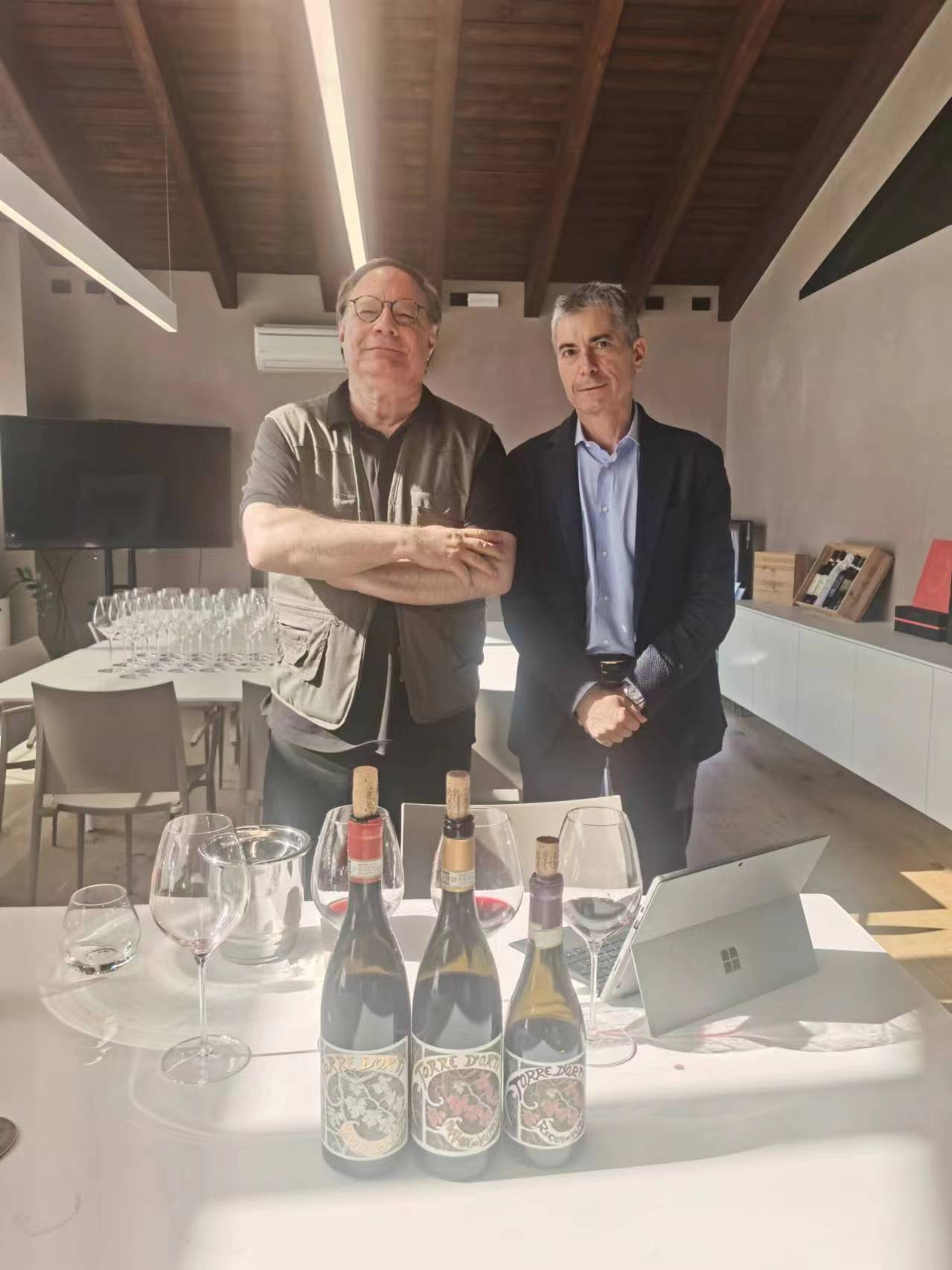
One common misconception about Amarone is that it is a technological wine, one dominated by the air-drying process the grapes are subjected to. Nothing could be further from the truth: just like all the great wines of the world, Amarone expresses terroir extremely well. It is very much a wine of terroir: there’s a recognizable difference in the wines, depending on where the grapes are sourced from. For example, as you move east from the Valpolicella Classica towards the Valpantena and the Val d’Illasi, the soil becomes lighter and so wines tend to be fresher and more mineral, as opposed to wines from the Valpolicella Classica, the wines of which are usually bigger and richer (and some would say more balanced too). It’s not that straightforward, unfortunately (for example, out towards the eastern production areas, the presence of Corvinone and Croatina increase in the blends, and changing their percentage also changes the wine), but the basics of the previous statement remain true.
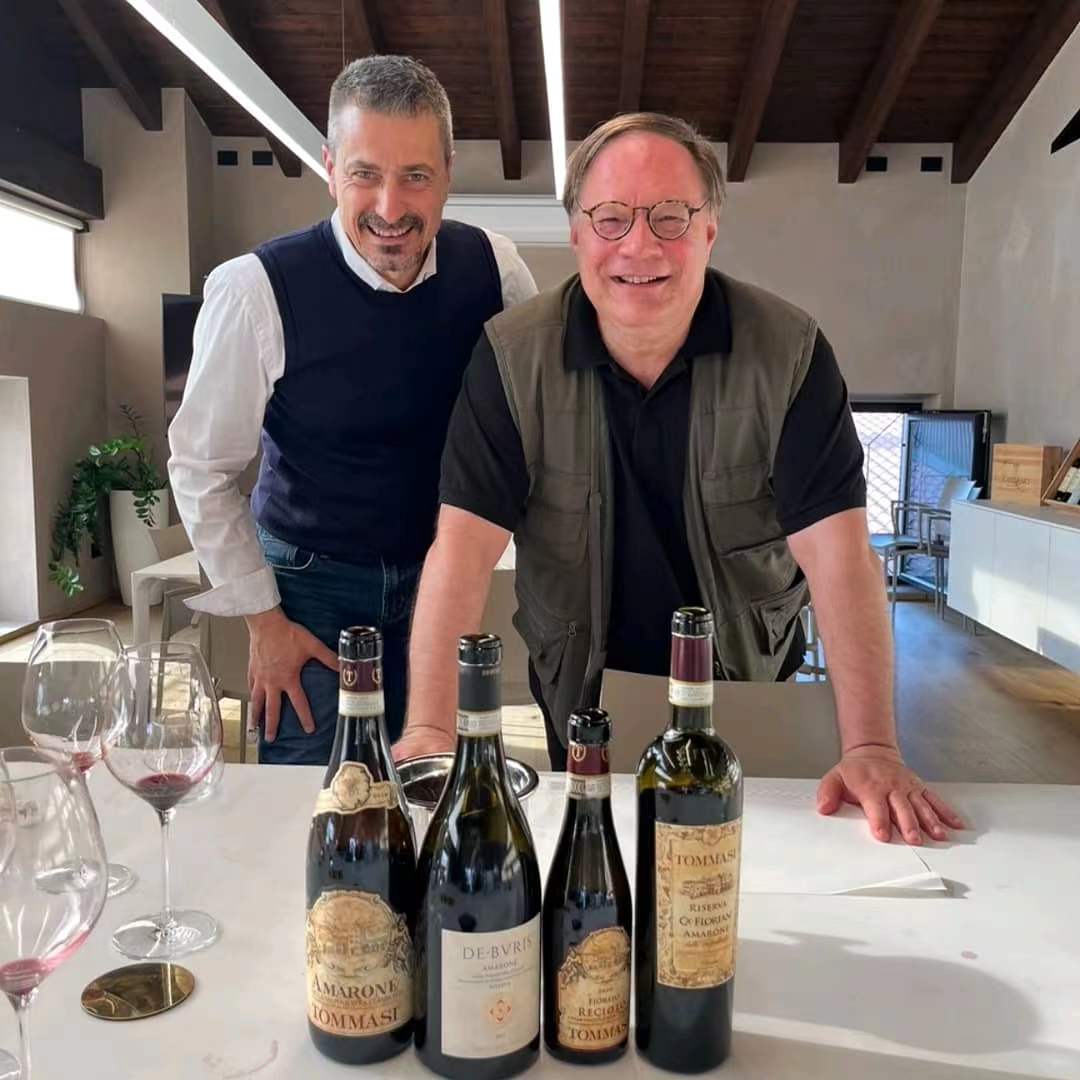
Recioto della Valpolicella.
Recioto della Valpolicella is a sweet red wine with an extremely long tradition in the Valpolicella area: it is in fact the first red wine that was made in the area, and the one that gave rise to the production of Amarone. Amarone was originally known as Recioto scapa’, or “the escaped Recioto”, escaped in the sense that, forgotten in a barrel, the remaining yeasts fermented the sugars right to the very end, creating an “escaped” dry wine in the process. I wish to point out just how good Recioto della Valpolicella can be: they are not just some of the very best sweet wines of Italy, but some of the best wines the country makes. Unfortunately, like all sweet wines currently, they do not garner the attention from the press or the wine-loving public they deserve. But reciotos are not just “sweet” wines. Sure, Reciotos are characterized by varying degrees of sweetness, but thanks to their balance and acidity they can be enjoyed during the whole meal. In other words, not just with desserts (chocolate ones are best) or on their own, but also with long-cooked stews, blue cheese canapés, liver terrines and foie gras (but be careful to choose a less tannic Recioto for this specific food pairing), aged cheeses, cocoa bars of high purity (say 70% and above), and a good cigar. Furthermore, believe it or not, Reciotos make excellent aperitifs. After all, they do the same in France with Maury and Vin Doux Naturels, for example.
The wines in this tasting report.
I tasted all the wines in this tasting report at the Tommasi Wine estate in Pedemonte on April 13, 2024. All the producers were on hand, with each presenting me their wines in a pre-defined, set, amount of time. Given the numerous wines each estate makes, I asked to focus on each winery’s Amarone and Recioto della Valpolicella wines only for this tasting report. In a second moment, I will be publishing a specific report on the Valpolicella and other wines made by this association’s producers. I wish to extend a big thank-you to the Famiglie Storiche’s members, and to president Pierangelo Tommasi and his Press & Communication director, Annalisa Armani, for their help and graciousness in setting this tasting up for me and Yumi Liu, one of my staff wine writers.
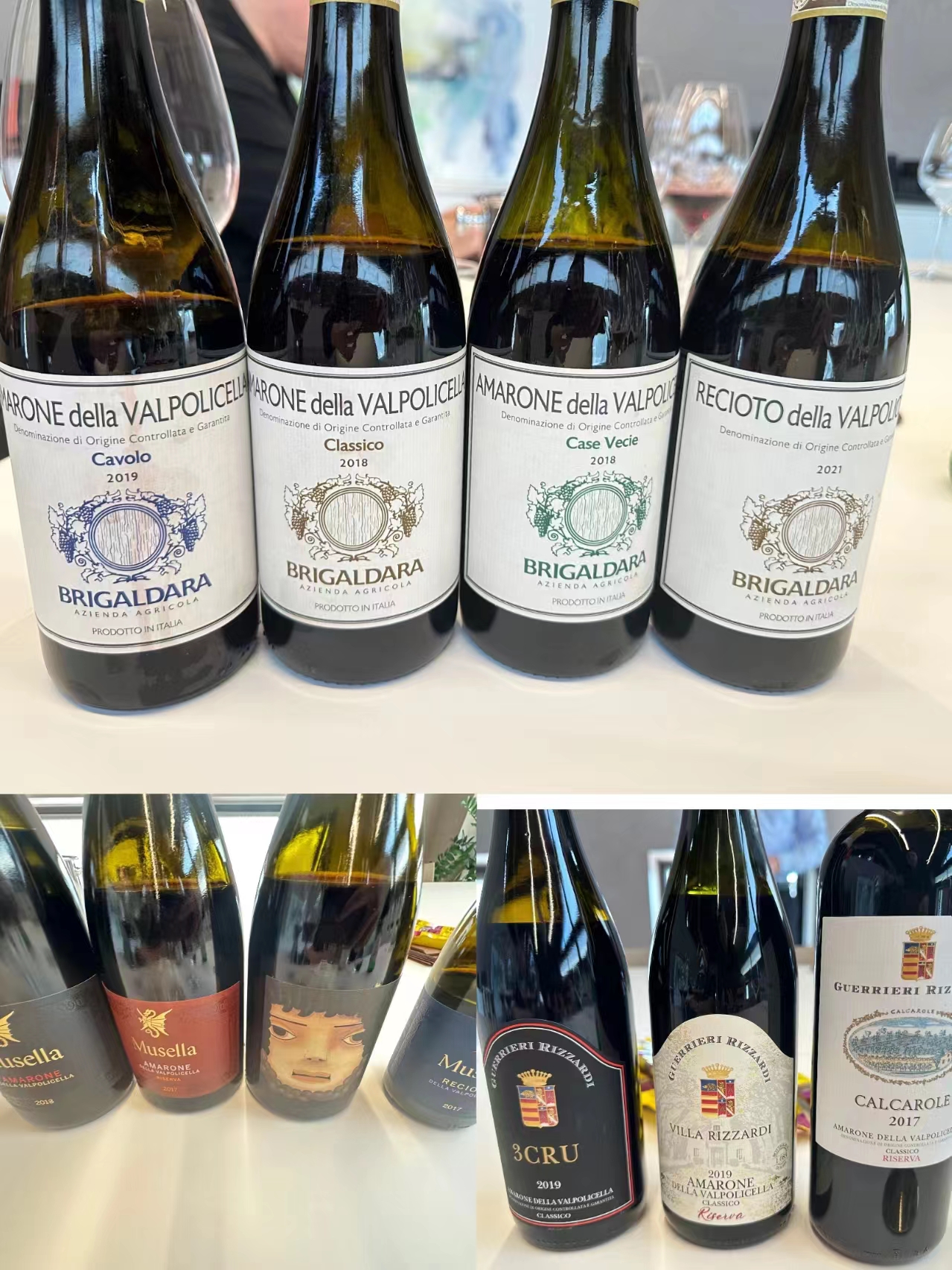
As is always my custom, this report was not sponsored or paid for in any way by the Famiglie Storiche or anyone else. I paid my train ticket to and from Verona, as well as taxi ride to and from the Tommasi estate, out of pocket, as well as that night’s hotel stay. This is your guarantee that my writing is as unaffected by conflicts of interest as possible.
Allegrini.
Founded in 1854, this prestigious estate is now being run by the seventh generation, consisting in Silvia (in charge of the company’s PR), Francesco (CEO), Giovanni (Winery operations) and Matteo Allegrini (Export). It is a very exciting time for Allegrini, given that the winery has recently changed not just its leadership, but posts in key upper-level positions as well, and will be looking to regain its rightful place at the top of Veneto and Italian wine estates, after some less than thrilling wines of years past.
The Allegrini winery can count on 150 hectares mostly in the Valpolicella Classico area (in communes such as Sant’Ambrogio and Fumane, with single vineyards including La Poja, La Grola, Fieramonte) and mostly old vines, while twenty hectares are located in the eastern part of Valpantena. Another 30 hectares are in Lugana (they actually make their excellent Lugana wine from 50% of their grapes, and the rest of the grapes they sell). All told, the winery makes roughly 1 million-1.1 million bottles of wine/year. How time flies, and how things change: Silvia recalls that when she started working at the winery (at 25 years of age) there were only five people in the office, now there are almost forty. She told me that she greatly appreciates the opportunities to learn that she has had: over the years, she had a chance to do a bit of everything, from working in the vineyards to the cellar and even the bottling line. And though she finds it was all very useful in helping her form her persona, she likes the PR part of the work most.
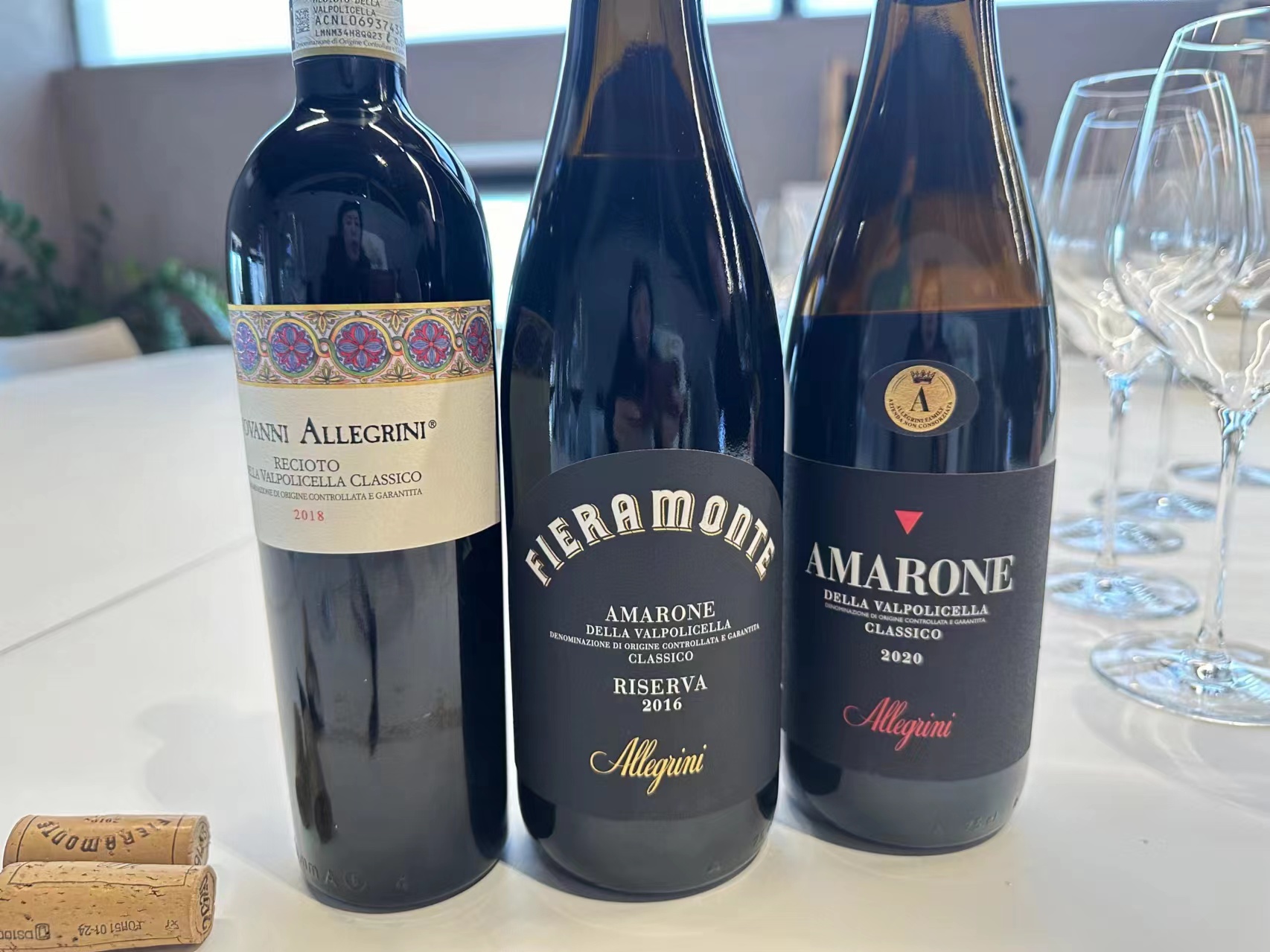
Allegrini 2020 Amarone della Valpolicella Classico 92
Deep ruby. Blackberry, potpourri and faded violets on the serious, refined nose. Then also very serious, austere even, on the attack and in the middle, but with plenty of glyceral sweetness to the dark fruit and herbal flavours on the nicely concentrated and tapered, long finish. A hint of black forest cake adds interest on the back end. This is a blend of 90% Corvina and Corvinone (about half of each, if anything it is the Corvina part that increases especially in cool years, while in hot years they increase the Corvinone) and 10% Rondinella and Oseleta. Grapes were air-dried until the end of December. About 100,000-120,000 bottles/year. Drinking window: 2028-2035.
Allegrini 2016 Amarone della Valpolicella Classico Riserva Fieramonte 93
Good full ruby. Aromas and flavours of chocolate, coffee, herbs, camphor, and orange peel. This is very tannic but not mercilessly angular; drinking it with food will greatly increase its pleasurability. The aftertaste is long and tactile. The grapes with which Allegrini’s flagship wine is made come from less than five hectares in Mazzurega di Fumane di Valpolicella (Mazzurega is the hill north of Fumane) located at 420 meters asl. This site was farmed already by grandfather Giovanni, but the family stopped production in 1985 because the vines had become too old and were replanted. Once the vines reached 10-12 years of age, the grapes were used to make the classic Amarone; finally, after twenty years (with the 2011 vintage), the winery once again is making a single vineyard Amarone with grapes just from this site. Fieramonte is meant to be a completely different style of Amarone that stands recognizably apart from the winery’s classic bottling. It is, in some respects, an extreme interpretation of Amarone that spends four years (instead of the twenty-four months of the classic Amarone bottling) in new barriques, but is made with the same blend of grapes as the classic Amarone. About 6000 bottles/year made. Drinking window: 2026-2035.
Allegrini 2018 Recioto della Valpolicella Classico Giovanni Allegrini 94
Bright ruby. Initially a bit reduced, it opens with aeration to offer pretty notes of red cherry, milk chocolate, dried peach, almond paste, coffee liqueur and candied violets. Then similar flavours in the mouth, with a sultry nuance lingering nicely on the long well-balanced finish. This is actually still quite young and though it can be enjoyed now, will likely last in a good cellar for a good decade more at least. It boasts the usual Allegrini blend of 45% Corvina, 45% Corvinone, 5% Oseleta and 5% Rondinella; the grapes are pressed at the end of January and aged in second-hand barriques for 18 months. About 15-17000 bottles/year are made. Drinking window: 2024-2033.
Begali.
The Lorenzo Begali winery was originally founded in 1943 by Giordano Begali (in Cenga, a hamlet that is part of San Pietro in Cariano), who sold grapes and bulk wines. The winery started estate-bottling under Lorenzo: it is one of the smaller estates of the Famiglie Storiche, a true family-run operation, that farms fifteen hectares (more than in the past because they bought just this past March 2024 the whole of the Ca’Bianca vineyard area, which is now a monopole. Prior to this acquisition, the family had been renting the site; in 1997 they bought two hectares that they had been farming, and now own Ca’ Bianca in its entirety. Begali produces about 80,000-100,000 bottles a year. Running the family winery today are: Tiliana, who oversees the office, commercial and marketing departments; Giordano, who is in charge of the cellar; and Lorenzo, who tends the vineyards. I am happy to report that Lorenzo, although he loves all his wines equally, has a soft spot for Recioto della Valpolicella. Allow me to add that that’s a great thing, given that Begali is one of the recognized masters of Recioto in the area. That much admitted, from a commercial and visibility standpoint, it is not surprisingly the Amarone and the Valpolicella Ripasso are the estate’s most important wines.
Begali 2018 Amarone della Valpolicella Classico Riserva Monte Ca’Bianca 94
Bright red. Explosive aromas and flavours of red cherry and berries are complemented by herbal and coffee nuances. Then very light on its feet and very fresh in the typical Begali house style, with a suave, long, vibrant fruit-accented finish. A blend of mostly Corvina and Corvinone (note that at Begali they tend to use a good deal of Corvinone), 20% Rondinella and 5% Oseleta. There are many reasons explaining the winery’s attachment to Corvinone: for one, their vineyards are especially suited to this variety, such that their Corvinone’s stalks almost always turn red come autumn (a sure-fire sign that it has ripened fully, which is not always the case with Corvinone, a very habitat-dependent variety). Eagle-eyed readers, or those with good memories, will notice the absence of the word “vigneto” on the label: this is because the Rondinella used in the blend is now sourced elsewhere. About 6000 bottles of this beauty are made: the grapes were air-dried for about 90-100 days, and the wine spent about 40 months in 350 liters cigarillos and eight months in a big barrel. Drinking window: 2026-2034.
Begali 2021 Recioto della Valpolicella Classico 98
Bright red-ruby colour. The forward but intense floral nose is remarkably deep and precise, boasting pure red cherry, violet, Oriental spices and marzipan aromas, complicated by a note of raspberry reduction. Boasts a multilayered quality to its deep, ripe, clean flavours of blackberry, strawberry, sandalwood, marzipan and ink. Closes long and suave, magically combining lightness of being with seamlessness and accuracy. This sweet wine (about 100-110 g/L r.s) is beautifully balanced: it spent about two years in tonneaux, but you’ll never guess it spent that much time in oak. Fantastic Recioto della Valpolicella made by one of the wineries that is universally recognized for being one of the very best at it. Last made in 2016, this is a blend of 65% Corvina (and Corvinone), 30% Rondinella, 5% Molinara and 5% Oseleta. About 4000 half/bottles made: this is drop-dead gorgeous and highly deserving of your attention, care, money, taste buds, memory, wine fridge, cellar, and everything else in between. Don’t miss out on trying it. Drinking window: 2024-2040.
Brigaldara.
The original winery was founded in 1929, and then bought by Renzo Cesari, the great-grandfather of the current Cesari owners. For Renzo, wine was a hobby; but then, in 1979, his son Stefano decided to devote himself to winemaking. In 1986, he quit his previous job selling machinery and turned full-time to wine. They farm 50 hectares of vines, but also tend to a couple of hectares of olive trees and another 70 hectares of forest. Brigaldara produces 350,000 bottles of wine/year: of these, the biggest volumes are of the Amarone (80 K) but they make even more of their Valpolicella Ripasso (about 110,000 bottles/year). This is another estate that is smitten with Corvinone, finding it works very well in the classic Valpolicella blend of grapes when it is grown in dry soils and at higher altitudes.
Brigaldara 2019 Amarone della Valpolicella Cavolo 91+
Very straightforward, linear wine offering notes of coffee, herbs and faded red flowers that complement subdued but clean red fruit aromas and flavours. This comes across as a little tough on the long, clean, lasser-like finish. Aged five years in new and used barriques and used 25 hL Slavonian oak barrel. About 20-25,000 bottles/year made. This strikes me as having very much a Valpantena profile, with that linear delivery of fruit and not quite the same flesh that characterizes the Amarone form the Classica area, but it also boasts greater freshness than the latter area’s wines. As it will no doubt improve with some time in the cellar, I have added a ‘+’ to my score. The very clean profile of fresh fruit is the result of the estate avoiding grapes hit by noble rot, preferring to make that is cleaner and purer (as many producers in Valpolicella tend to do today). The Cavolo vineyard is located near Grezzana in Valpantena: it was planted in the 1990s (and owned by grandmother Emelia) so in theory it’s a rented vineyard. It is located right across Villa Arvedi, which used to be part of the Bertani estate. The latter was planted at the same time as Case Vecie, up until 2011 the Cavolo grapes went into Case Vecie, but with the 2012 vintage they decided to start bottling this wine as a new, separate cru. The main difference between the two single vineyards is the altitude at which they are situated: Cavolo at 200 meters asl, Case Vecie is instead at 500 meters. This means that so even if the two vineyards are very close (on the same hill, about two kilometers apart), the wines from each taste quite different. The Cavolo grapes are usually harvested around September 10, while Case Vecie’s are usually picked much later, even around October15. The blend of grapes is the same, at 45% Corvina, 45% Corvinone, and 10% Rondinella. Drinking window: 2027-2032.
Brigaldara 2018 Amarone della Valpolicella Classico 94
Luminous ruby. Richer and deeper than the Amarone Cavolo, with notes of coffee, flowers and herbs complementing red fruit and sweet spice flavours, without any signs of noble rot. The finish is precise, nicely textured and light on its feet, as is typical of all Brigaldara wines. In 2018, the grapes were harvested mid-September; pressing began the first week in January. About 24,000 bottles made. Drinking window:
Brigaldara 2018 Amarone della Valpolicella Case Vecie 95
Good full ruby-purple. Captivating aromas and flavours of red cherry nectar, raspberry compote, sweet spices, ink and graphite. At once very powerful but also elegant, finishing with zingy peppery cut and a long, mouthcoating texture. The Case Vecie vineyard falls in the thin strip of land that has no name: it snakes in between Valpantena Classica and the valley of Vajo Galina. The Case Vecie site is harvested one month later compared to the Cavolo vineyard; this means that the so grapes are air-dried about 100 days until mid-February. This is because the grapes in Case Vecie are harvested one month later in an area where there is no fog and lots of ventilation, so the grapes mature not from the hot temperatures but from the sunlight exposure. The mountain location changes the taste of the grapes that are characterized by fresher. more herbaceous and balsamic nuances, all descriptors fairly characteristic to the Case Vecie vineyard. About 15-20,000 bottles/year. Drinking window: 2026-2036.
Brigaldara 2021 Recioto della Valpolicella 96
Moderatley saturated bright ruby. Very elegant, rich and deep in the mouth, showcasing excellent balance with lively acidity giving an impression of lightness. The clean, ripe red berry, orange peel and citrus flavours are crisp and long. The grapes are from the Marcellise area; the grapes air-dry for about 120 days (they’re harvested in the same period as are the grapes used to make the Amarone Cavolo and Amarone Classico). At Brigaldara they like making slightly drier-styled wines, and so this Recioto is on the drier side for the category (only about 78 g/L r.s.). The blend is the same as for the Amarone wines, save for a little more Corvinone. This is excellent! Aged two years in a mix of barrels (maybe a little more of the big barrels are used after an initial passage in barriques). Drinking window: 2024-2033.
Guerrieri Rizzardi.
The Guerrieri Rizzardi family that runs this estate is not based just in Valpolicella, but in other famous Veneto wine denominations too, and it all has to do with the family’s ancestry. In fact, Guerrieri Rizzardi traces its roots back to not just the Guerrieri and Rizzardi families, but the Rambaldi too. The marriage of Agostino Guerrieri (1749-1833), son of Vincenzo (1711), with Maria Teresa Rambaldi led the Guerrieri family to begin farming land and bottling wine from Bardolino. Later, when Giuseppina Guerrieri married Carlo Rizzardi, heir of the Rizzardi family who owned a large wine estate in Negrar, the union of the Guerrieri and Rizzardi families became a fait accompli leading to the estate as we know it today. Today, Agostino, Giuseppe and Olimpia Rizzardi are working at the estate. Total production volume hovers at about 900,000-1,000,000 total bottles a year, only a part of which is Valpolicella wines: the winery is also well-known for making excellent Bardolino wines, as well as wines from Soave and Valdadige.
Relative to Amarone production, the winery has 25 hectares in Negrar in the Valpolicella Classica (15 hectares are Guyot-trained, while another 10 hectares planted in the 1970s are pergola-trained. Clearly, the pergola (or canopy) helps in the warmer vintages as it avoids sunburn and excessive concentration in the grapes and its still a evry common training system in this part of Veneto. Guerreiri Rizzardi is another estate that has a lot more Corvinone, but also Barbera and Sangiovese small plantings of which have always existed in the Valpolicella). Generally speaking, at Guerrieri Rizzardi they like to ferment in stainless steel, to destem, to use selected yeasts in order to ensure proper fermentation curves, and age in 225 hectoliter barriques for twelve months and then twenty-four in big oak barrels (the Amarones are typically bottled after three and a half years). This is another estate that avoids using noble-rot-affected grapes.
Guerrieri Rizzardi 2019 Amarone della Valpolicella Classico 3Cru 92
Deep vibrant ruby. Austere chocolaty and herbal nuances to the red and dark fruit flavours. Closes a little warm and tannic on the long lively finish, with a rising peppery note. This blend of 75% Corvina and Corvinone plus 10% Rondinella, 10% Barbera and 5% Sangiovese will undoubtedly be better with food. The wine’s name derives from the three crus (all in Negrar) from where the grapes are sourced. Unlike the Amarone Riservas, this wine is produced every year. The grapes are air-dried as always but with the advent of climate change are now pressed sooner than before (even in November and December, while it used to be January and February only a few decades ago: this is because the maturation curve rises much faster nowadays). Drinking window: 2025-2032.
Guerrieri Rizzardi 2019 Amarone della Valpolicella Classico Riserva Villa Rizzardi 94
Saturated ruby-red. Brooding aromas of blackberry and red cherry, with a dusting of herbs. Enters with sharply delineated flavours of black cherry and blackberry, then turns increasingly chewy with noteworthy extraction of chocolaty dark fruit and herb flavours. Finishes impressively long, with and earthy herbal cocoa note. As good as Guerrieri Rizzardi’s classic 2019 Amarone 3Cru is, this is much richer and longer; but it too finishes with an austere, herb-accented finish and some heat. An earthy note of cocoa also emerges on the long back end (the earthiness is most likely a contribution of the clay soils). This is a blend of 75% Corvina and Corvinone, plus 15% Rondinella and 10% Barbera picked from the ten hectares of pergola-trained vines planted on a very clay-rich soil. This blend differs from that of the 3Cru Amarone because the Villa Rizzardi has a little more Corvina and Rondinella and a little less Corvinone, as well as no Sangiovese. Drinking window: 2027-2034.
Guerrieri Rizzardi 2017 Amarone della Valpolicella Classico Riserva Calcarole 95
Saturated ruby. Vibrant, primary, aromas of blackberry, red cherry, violet and cloves, complicated by a hint of sweet spices. Then very ripe, fat and glycerally sweet in the mouth, but kept fresh by firm acidity and underlying salinity. A very laid-back Amarone in keeping with the characteristics of the year, this boasts truly lovely purity of flavour and much softer tannins than the other Amarones made by Guerreiri Rizzardi, because this is their wine with the lowest percentage of Corvinone. Impressively persistent on the aftertaste, with nuances of tomato paste that hint to the year’s hot and dry weather, but also plenty of citrussy acidity thanks to the calcareous soil the vines are planted on (hence the wine’s name, “Calcarole”). This is a blend of 73% Corvina and Corvinone, 10% Rondinella, 10% Barbera and 7% Sangiovese. Calcarole is made from a 6 hectares large hillside, where the vines were planted in 1985-1986, facing west/southwest. Drinking window: 2026-2036.
Masi.
Founded in 1772 by the Boscaini family, Masi is one of the most famous and best-known names in all Italian wine. It has been unequivocally associated with Valpolicella since forever, and this despite the family also owns estates in Tuscany (Podere del Bello Ovile) and Argentina (Masi Tupungato). Over the years the estate has started collaborations with many other wineries, such as Conti Bossi Fredrigotti in Trentino and Canevel, a very fine producer of sparkling wines from Veneto; and closer to home, with the Serego Alighieri estate, another producer of Valpolicella, Amarone and Recioto wines. The latter collaboration began many decades ago, leading to the first Serego Alighieri Vajo Armaron Amarone bottled in 1979 (a marvelous wine: I was living in Rome at the time of its release, and I so loved it I bought practically all the bottles my favourite wine store had in stock). Differently from practically all other estates engaged in Amarone production, at Masi they are strong believers in the quality of Molinara, that is past vintages comprised as much as 20-25% of the blend (the changes in official Amarone production guidelines forced them to reduce its presence). Masi also has established an amazing research center over the years and has done highly commendable, useful, ground-breaking work on the Valpolicella’s ancient grape varieties, soils and general habitat. This estate is one of the class acts in Italian wine, and Sandro Boscaini is one of the greatest wine minds Italy has ever had.
Serego Alighieri 2016 Amarone della Valpolicella Classico Vajo Armaron 95
Fairly deep opaque ruby-red. Spice and forest floor complement intense red plum and cherry under spirits on the enticing nose. Red cherry, earth and spicy chocolate flavours follow through on the palate. At Serego Alighieri, the grapes are still air-dried in the winery loft on top of bamboo racks (the arele). This is a blend of 70% Corvina and Corvinone, 20% Rondinella and 10% Molinara. Back in the 2000s it was aged for at least six months in cherry wood barrels, but they found this to be too oxidative a medium so now it’s only four to five months (consequently, the wine is much darker and more austere than before). Also unlike most other Amarones in this report, about 15% of the Corvina and Rondinella grapes are attacked by noble rot. The grapes are air-dried 90-100 days and the wine is aged for 36 months ins small 600-liter tonneaux (the 4-5 months in cherry wood are in large barrels). On a personal note, I liked this wine more when it had more Molinara in the blend and was aged for longer in cherry wood, though I understand that it didn’t age as well; still, it was delicious. Not that the newer versions aren’t, as this wine’s high score attests. About 35-40,000 bottles made a year. Drinking window: 2026-2034.
Masi 2017 Amarone della Valpolicella Classico Riserva Costasera 94
Fully saturated ruby. Very modern-styled Amarone nose of graphite, cassis, violet and menthol. Intensely flavoured and penetrating, with dark fruit and bitter chocolate flavours that are fleshier than those of many past vintages of Costasera Riserva. Still, this is tightly wound, a serious wine that offers very good volume and plenty of developing complexity. Closes long and youthfully chewy but also fruity and chocolaty, maintaining its more modern side throughout with graphite and black fruit notes that are not just typical of the Oseleta in the blend but of this wine. A blend of mostly Corvina and Corvinone plus some Rondinella and Molinara, but also the all-important 10% Oseleta that is a real character trait of Costasera Riserva. The grapes were air-dried for 120 days. About 30,000 bottles made. Drinking window: 2027-2034.
Masi 2015 Amarone della Valpolicella Classico Mazzano 96
Fully saturated ruby. Very deep aromas of herbs and minerals on the not especially fruity nose; opens only slowly with plenty of aeration to showcase dark plum and berry nuances. Then also shut down and very powerful in the mouth, with strongly peppery and chocolaty nuances and a thick texture lifted by high acidity. The grapes were completely devoid of noble rot (Mazzano is a dry site so it rarely forms there), and so there’s no glycerine-induced “illusion of sweetness”; and no residual sugar, such that the wine is classically dry. The grapes are picked in old pergola-trained vineyards planted on mostly white marl at 250-280 meters asl and extending over seven hectares in Negrar. About 15,000-17,000 bottles made in what is a generous, rich vintage. Drinking window: 2027-2038.
Masi 2017 Recioto della Valpolicella Classico Ammandorlato Mezzanella 94
Medium red with garnet highlights. From vineyards in Vajo dei Masi, Campolongo and Mezzanella, the grapes were subjected to 250 days aoppassimento: their concentration is such that they give an absolutely unique version of sweet-not so sweet Recioto, rife with notes of chestnut and dried fruits in the background and the more typical red cherry and sweet spices up front. Drinking window: 2025-2033.
Musella.
Blessed with a beautiful fifteenth-century structure, Emilio Pasqua Di Bisceglie founded the estate in 1995; his daughter Maddalena Pasqua di Bisceglie, who now is at the estate full-time (helped by her cousin Enrico Raber) but was once studying contemporary history, jokingly told me: “I was tricked by my dad to come see the estate and spend some time there: he knew full-well I’d fall in love with it!”. The winery makes about 180,000 bottles a year, the easiest of which to sell are those of Valpolicella Ripasso. Their 25 hectares, located on three different hills (Monte Drago, Perlar and Palazzina) all with different soils, have been farmed biodynamically since 2009.
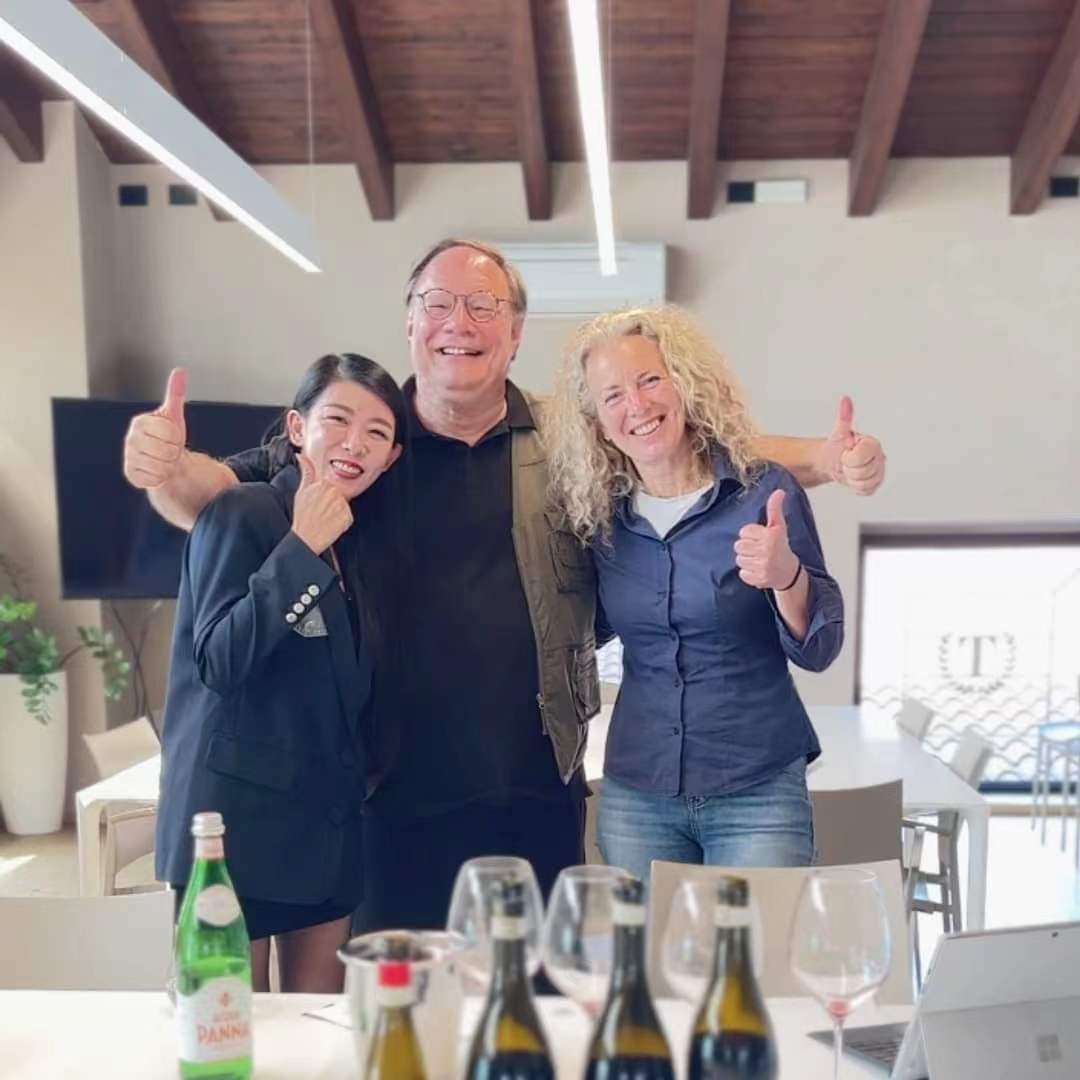
Musella 2018 Amarone della Valpolicella 93
Good full red-ruby. Pungent florality, then earthtones and forest floor complement red cherry and violet on the perfumed nose. Then juicy red cherry flavours and inner-mouth floral perfume speak of the use of whole bunches. A blend of mostly Corvina and Corvinone (roughly 90%), with some Rondinella and Oseleta, this is very approachable and easy to drink: a real food wine, that was bottled in April after a stay in cement tanks. About 50% whole bunches used. Drinking window: 2025-2033.
Musella 2017 Amarone della Valpolicella Riserva 94
Moderately saturated bright ruby. Spicy red cherry, raspberry, and mocha on the nose. Terrific intensity and brightness in the mouth, this is made in a much richer style compared to Musella’s 2018 Amarone. Very glyceral, boasting compelling sweetness of red fruit. Closes long and very clean, with a very strong, rising note of peppery spices. A real step up in concentration and persistence, this very spicy beauty is made with about 50% Corvina, 30% Corvinone, 10% Rondinella and 10% Oseleta. Drinking window: 2026-2036.
Musella 2015 Amarone della Valpolicella Senza Titolo 95
Vivid deep ruby. Scented nose combines dark plum, tobacco, tar, licorice and spices. Dense, rich and stuffed with flavours of dark fruit, herbs and spices. The very creamy rich fruit on the long rising finish spreads out to coat the entire palate. First made in the 2000 vintage, it is a bigger-styled, broad and round Amarone with noteworthy residual sweetness, but this also boasts very interesting harmonious acidity that keeps this ripe, big boy fresh (2015 was a very warm year). The blend is 70% Corvina and Corvinone, 10% Rondinella, 10% Oseleta, 7% Croatina and 3% other varieties planted between 1960 and 2001; the grapes were destemmed. I suggest serving this on the slightly cooler side. Drinking window: 2026-2037.
Musella 2017 Recioto della Valpolicella 90
Bright red. Violet and ripe strawberry on the nose and in the mouth. Easygoing Recioto that is nicely round, clean and sweet. This does not strike me as being especially complex or long, but it’s nicely approachable and easygoing. Drinking window: 2024-2029.
Speri.
Dating back to 1874, Speri is one of the Valpolicella’s best-known names. And there are numerous things worth knowing about Speri, that in many respects is an outlier in the large Valpolicella production zone. For one, the estate farms 60 hectares that are all only in the Valpolicella Classica. Furthermore, they make only one Amarone and it’s a single-vineyard wine, which is a rarity. In fact, at Speri they make only one wine per denomination, which is also quite rare. And is if all that wasn’t already enough, Speri is one of the few estates that still uses a lot of Rondinella (that once used to be more popular than it is today) because they like the savouriness and salinity it brings to the finished wines. Speri has been organic-certified since 2015. Every wine made at Speri will strike you for its illusion of sweetness, not because of residual sugar, but because of sheer ripeness of the fruit.
Speri 2019 Amarone della Valpolicella Classico Sant’Urbano 96
Fully saturated red-ruby. High-pitched aromas of raspberry, blackberry, spices, violet and grilled nuts. Sweet and silky but also juicy and lively, thanks to harmonious acidity keeping the nicely concentrated flavours vibrant. This boasts excellent balance; not at all made in a jammy style, this finishes very clean, steely, and classically dry (about 3 g/L r.s.), with a very typical underlying note of graphite. A blend of 70 % Corvina and Corvinone, 25% Rondinella and 5% Molinara all grown at roughly 400 meters asl but the vines are specifically located where the hill changes direction, such that the grapes bask in a fresher, windier, and more sunlit area. There the grapes ripen because of the light and not of the heat, which is important because while the grapes need to be concentrated, they also need to have enough acidity. The wine ages three and a half to four years in oak and then one year in bottle. Drinking window: 2027-2038.
Speri 2012 Amarone della Valpolicella Classico Vigneto Sant’Urbano 94
Deep red with some garnet rim. This boasts a sweet and savoury mouthfeel on entry, not to mention a very smooth texture, then turns steely and austere in the middle and on the fresh and long finish. In a warm vintage such as 2012, the Sant’Urbano vineyard showcases just how much freshness it can endow its wines with. A mix of 70 % Corvina and Corvinone, 25% Rondinella and 5% Molinara. Drinking window: 2024-2030.
Speri 2021 Recioto della Valpolicella La Roggia 96
Fully opaque ruby. Very deep spicy rich red and black fruit aromas and flavours are sexed up by a hit of vanilla (but there’s not new oak used here). Very pure, fresh, juicy and nicely sweet, I love this beautiful Recioto’s balance (6 g/L total acidity and 120 g/L r.s). Building hints of dark chocolate add interest and complexity on the close. This is a 70 % Corvina and Corvinone, 25% Rondinella and 5% Molinara blend, but there’s also a few grapes of other, some very rare and others less rare native grapes, that grow in the vineyard’s oldest sections (varieties such as Bigolona and Oseleta). Spent two years in used barriques (this is the only Speri wine where barriques are used). Drinking window: 2024-2036.
Tedeschi.
Founded originally in 1630 (but most information in the family’s hands dates back to 1824), it was Lorenzo Tedeschi who, in 1964, introduced the current philosophy of vinifying separately the grapes from the Monte Olmi vineyard area (the family bought it in 1918) that always struck him as being especially qualitative. The vineyard faces southwest: and though at 190 meters above sea level it is not the highest vineyard you’ll come across in the Valpolicella Classica, it gives always a fresh, light on its feet Amarone that has become very well-known all over the world. The Tedeschi estate makes twelve different wines from grapes grown at many different altitudes, microclimates, and exposures. Antonietta (administration and Italian market), Sabrina (export and sales) and Riccardo (winemaking and export) run the estate today.
Tedeschi 2017 Amarone della Valpolicella Classico Riserva Capitel Monte Olmi 95
Good full saturated ruby. Violet, dark plum, blueberry and herbs on the pretty nose. Then layered and suave, with flavours similar to the aromas: this is very fruity on entry, then more austere and steely in the middle, finishing long and clean with strong mineral tang. 10,000 bottles made a year. Drinking window: 2027-2035.
Tedeschi 2016 Amarone della Valpolicella Riserva Maternigo 95
Saturated bright red-ruby. Ripe aromas of blackberry, strawberry and milk chocolate, with very subtle oakiness. Lush, chewy and rich, with powerful red berry, cherry, mineral and chocolate flavors lifted by harmonious acidity. Spicy and sweeter than the 2017 Amarone Monte Olmi, this finishes long and creamy with good violet perfume. From grapes picked at 300 meters asl, there’s about 6600 bottles/year of the newest Amarone label from Tedeschi (so far, the first and only vintage thus far is this 2016; the next vintage released will be the 2019). About 80% Corvinone and Corvina, with Rondinella and very little Oseleta. Drinking window: 2025-2038
Tedeschi 2016 Amarone della Valpolicella Riserva La Fabriseria 96
Luminous medium red-ruby colour. Boasts very complex and suave red cherry, strawberry, balsamic oils, and candied violet aromas and flavours. Very harmonious, easygoing and approachable, but with sneaky concentration and power. Lasts and lasts on the long rising smooth finish. At Tedeschi they have been using these grapes since 1983, but it’s only with the 2011 vintage that they decided to turn it into a cru, with only 2500 bottles made a year. Drinking window: 2026-2040.
Tedeschi 2019 Recioto della Valpolicella Classico Capitel Fontana 95
Deep ruby-red. Fresh red cherry, raspberry syrup and sweet spices, this gorgeous Recioto is very well balanced, boasting less than 100 g/L r.s. and good acidity such that this tastes very fresh and perfumed. Finishes long and silky, this is very light on its feet. Made from a selection of grapes, it is not produced every year and even then, in only 3000 small bottles. Ages two years in large barrels. Drinking window: 2024-2035.
Tenuta Sant’Antonio.
The estate’s origins date back to 1989, but the first Amarone and Valpolicella wines date to 1995: the owners are the four Castagnedi brothers who still all work in the winery. Over the years, the winery has done nothing but grow and gain awards and accolades: a new winery was launched in 2000 and more vineyards were bought. Today the Tenuta Sant’Antonio is divided into several estates, from the Soave area to Valpolicella. The family now has more than 150 hectares and produce more than 2 million bottles a year, subdivided in three different lines of wines. The estate makes very modern Amarone wines, in a big tannic style that has many fans.
Tenuta Sant’Antonio 2019 Amarone della Valpolicella Antonio Castagnedi 94
Deep ruby. Straightforward aromas and flavours of pepper, violet and crunchy ed fruits are veru spicy and chocolaty. Finishes vibrant and long, and strikes me as very food-friendly. Aged in once used barrels for one and half years in oak barrels and 500 liter tonneaux. This is a 30-30-30 Corvina-Corvinone-Rondinella blend, with the remaining portion being of Oseleta and Croatina. The pepper note is typical both of Corvina but also of the Eastern section of the Valpolicella production zone (all the Amarones from the extended eastern sites share, to greater or lesser degrees, that pepperiness). Drinking window: 2026-2034.
Tenuta Sant’Antonio 2016 Amarone della Valpolicella Campo dei Gigli 94
Moderately opaque ruby colour. Bright aromas of violet and dark cherry with hints of graphite and cracked black pepper and cloves. Very taut and a little shut down currently, with strong herbal undertones on entry; then more floral and fruity but finishes with youthfully chewy, slightly tough tannins on the inky aftertaste. This is aged in once used barrels and 500 liters large tonneaux for three years. The first vineyard the family ever owned, this Amarone is a single vineyard wine, so it’s not made every year. Drinking window: 2026-2034.
Tenuta Sant’Antonio 2012 Amarone della Valpolicella Lilium Est 93
Fully saturated medium red colour. Inviting aromas of blackcurrant, graphite, peppery spices, licorice and cloves. Enters rich and round then turns very tannic and structured on the long, powerful, very mouthcoating finish. Those who prefer their wines very big, full-bodied, thick and tannic will love this. Aged 5 years in barrels. Drinking window: 2025-2038.
Tommasi.
Founded in 1902, the estate now farms 262 hectares in the Veronese area (200 hectares in Valpolicella, the rest in Baroldolino, Lugana and soave), but in all, Tommasi now farms 800 hectares. They make about 300,000 bottles of the Amarone Classico, 12,000 bottles/year of the Amarone Ca’ Florian, 8500 of the Amarone De Buris, and of the Recioto. They have their own appassimento facility. Though they own many different vineyards today, this was not always the case. Rafale is the only vineyard they owned originally; Giacomo, and Angelo Tommasi (respectively the great grandfather and grandfather of the current Tomnmasi generation running things, bought the Fiorato site; while it was their father and uncles that bought Ca’ Florian). For a while they used the grapes from these three sites together, but when they opted to make the Ca’ Florian, they then chose Fiorato to make their Recioto.
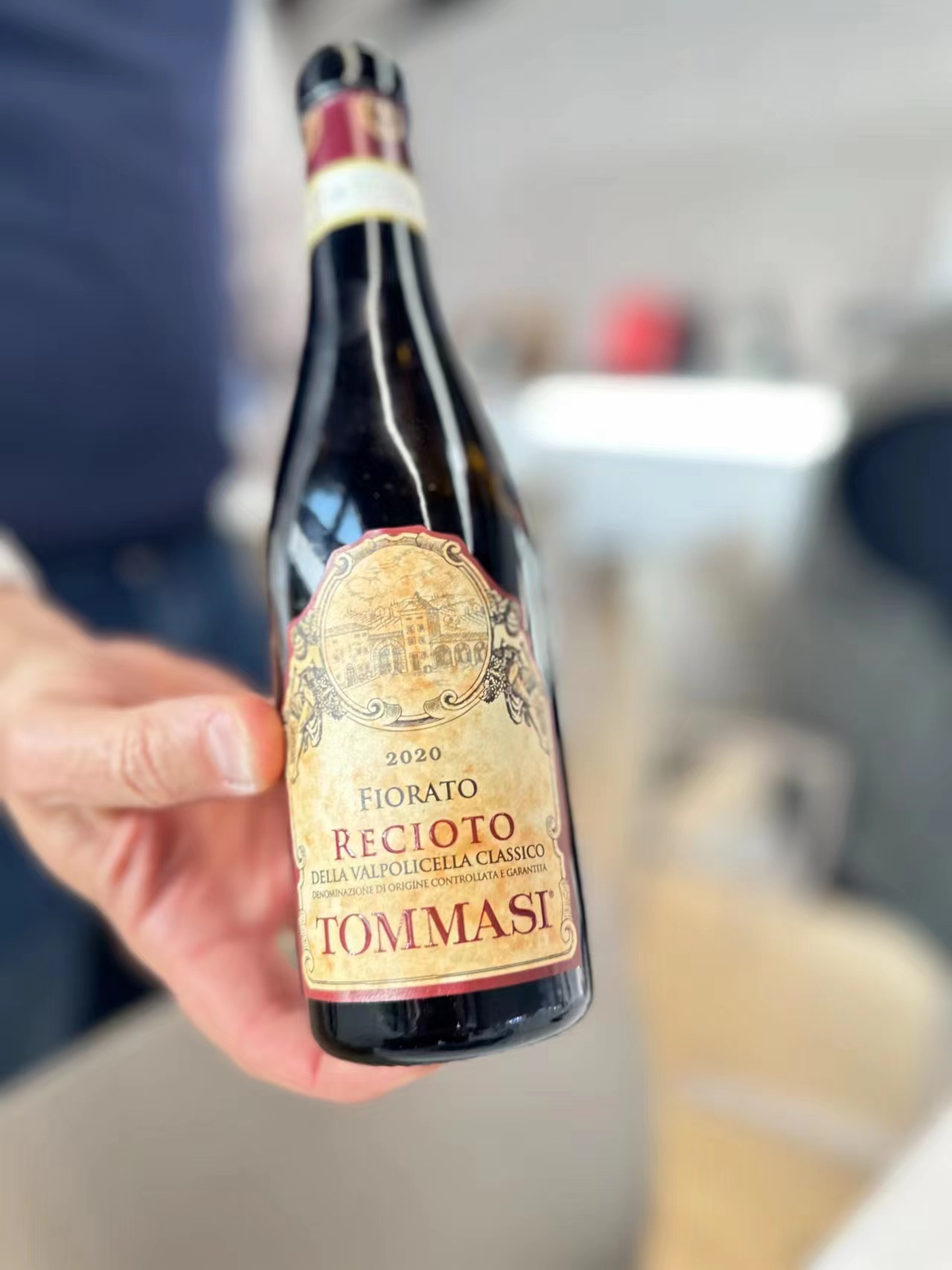
Tommasi 2019 Amarone della Valpolicella Classico 93
Bright red-ruby. Red cherry, pine cone, crushed rocks and orange peel on the fresh nose. Then balanced and refined, with very good freshness in the typical Tommasi style, one of class over power. Sleek, steely fruit and spices are nicely persistent on the mid-weight mouthfeel and long tapered finish. Will please those who like their Amarones on the more politely-styled, less hefty side. A mix of 80 % Corvina and Corvinone, 15% Rondinella and 5% Oseleta (they introduced Oseleta in 2010 to take the place of Molinara) sourced mostly from the La Groletta and Conca d’Oro crus. This spent three years in 35 and 65 hL Slavonian oak large barrels. 15% alcohol. Drinking window: 2026-2033
Tommasi 2015 Amarone della Valpolicella Classico Riserva Ca’ Florian 93+
Vivid red-ruby. Confected plums, crystallized red cherry, blackberry, geranium, iris and lavender on the complex nose. Enters smooth, fruity and very fresh, with nuances of red berries and lemon zest dominating, but then rising oak tannins leave a mouthcoating impression that will have you scrambling for food. Finishes long, precise and clean but this is still a baby and needs to spend still more time in a good cellar. Ca Florian is a single-vineyard wine made from roughly 35 years old vines on average that grow right behind the main house. A blend of 95% Corvina and Corvinone plus 5%Rondinella, this spends four years in oak (one year in smaller French oak barrels and three years in big 25 hL Slavonian barrels) and one year in bottle before going on sale: the grapes were air-dried for 100 days, stainless-steel fermented. Drinking window: 2027-2035.
Tommasi 2011 Amarone della Valpolicella Riserva De Buris 96
Fully saturated ruby. Offers a panoply of red berries, red cherry and blackberry on the nose and in the mouth, complicated by herbs, truffle and dark chocolate. Enters ripe and fleshy, then more austere; this is a rather massive Amarone by Tommasi standards, but still stays fruit-forward from start to finish. Very perfumed, long and lusciously sweet on the impressive, memorable finish. This flagship Amarone is made from 1.9 hectares planted on very poor chalky soil located at the top of the Groletta hill; the vines face southwest, looking out towards Lake Garda. Tommasi purchased ten hectares in the site back in 2000; the place’s full name is actually Groletta de La Grola (a name more associated with Allegrini, and in fact that winery owns neighbouring vines). Afterwards, Tommasi purchased the villa De Buris nearby and so decided to produce a new Amarone (first made in the 2008 vintage), linked to the villa and hence the wine carries its name. n 2008 fist vintage. Drinking window: 2027-2039.
Tommasi 2020 Recioto della Valpolicella Fiorato 95
Deep ruby purple. Fragrant, enticing aromas of blueberry syrup, plum sauce, cinnamon and candied violet. At once juicy and thick in the mouth, with very good inner-mouth perfume of violet providing noteworthy lift. Closes long and pure, with risingly intense notes of violet, cinnamon and nutmeg, this gorgeous Recioto is very approachable and easy to like; round and well-balanced, it’s ready to drink now but will age well. These are the last grapes to be picked (harvested a little later than the other grapes, usually in the latter half of September) and while the air-drying time of the grapes once reached 120 days, today the air-drying time of the grapes that will be used to make Recioto is mostly the same as that of the grapes used to make the Amarones. A blend of Corvina (65%), Rondinella (30%) e Molinara (5%) picked in the Firoato vineyard (so this is a single-vineyard wine), it is stainless-steel fermented in temperature-controlled tanks, this is aged twelve months in oak barriques. Drinking window: 2024-2035.
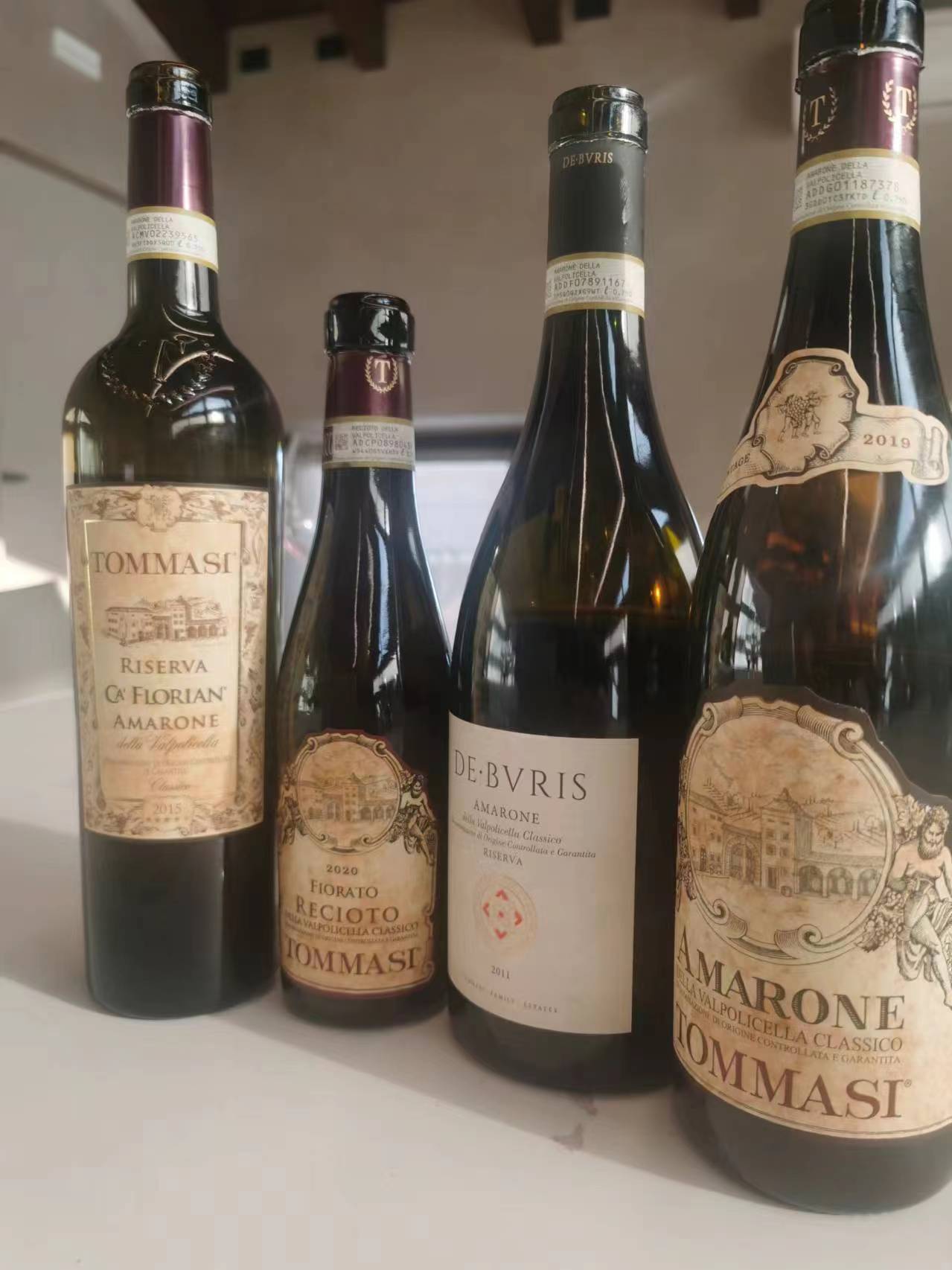
Torre d’Orti.
The estate was bought in 1990, but the new owners were unhappy with the state of the vineyards and so decided to replant. Most of these are located between 250-400 meters asl and are mostly Guyot-trained, but they are thinking of switching back to the traditional and historic pergola with new vineyards. The winery makes about 25,000 bottles of Amarone/year, out of a total of 150,000 bottles/year.
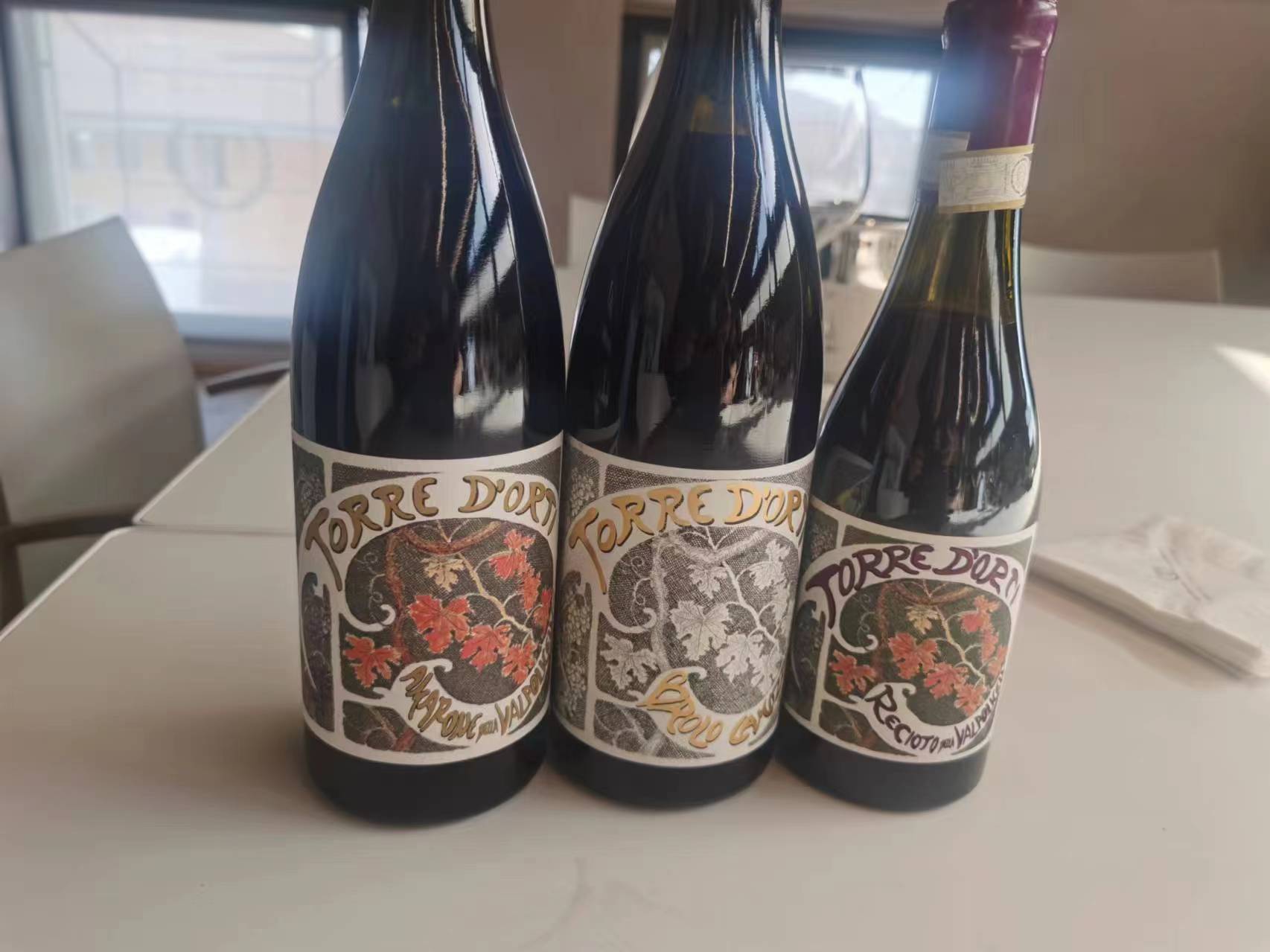
Torre d’Orti 2020 Amarone della Valpolicella 94
Bright red-ruby. Aromas of red berries, orange peel and violet. Then vibrant and fresh, with good clarity and cut to the spicy red and dark fruit flavours. This is very elegant and well-balanced: a juicy, fruity Amarone that just glides along the palate and is remarkably light on its feet and easy to drink. A very sophisticated wine that is a blend of roughly 60-70% Corvina and Corvinone, 20% Rondinella and 10% Oseleta planted between 300-350 meters asl and facing northeast. Drinking window: 2026-2032.
Torre d’Orti 2017 Amarone della Valpolicella Riserva Brolo Camuzzini 93
Vivid ruby-red. More perfumed than the 2020 Amarone, this is very spicy, downright peppery in fact, with precise, pure aromas and flavours of red and black fruits mingling with licorice and cigar ash. Finishes long with repeating notes of cracked black pepper. This was born as a Riserva made from a selection of the best barrels; its defining feature is the extremely long skin contact (six months). A blend of roughly 60-70% Corvina and Corvinone, 20% Rondinella and 10% Oseleta planted between 300-350 meters asl and facing northeast. Given this wine’s flagship status, they don’t produce it every year. Drinking window: 2026-2034.
Torre d’Orti 2019 Recioto della Valpolicella 94
Very pretty Recioto. Nice good full red colour. Strawberry, peach and orange peel on the nose and in the mouth. A late hit of ehrbs and spcies rise on the lomg sultry easygoing finish. About 60 g/L of residual sugar (usually there’s 80 g/L) in this blend of Corvina, Corvinone and Rondinella, picked in vineyards in the areas of Marcelliese and in Mezzane. Drinking window: 2024-2030.
Venturini.
Founded in 1963, three generations and counting (Antonio, the grandfather of the current owners, founded the estate; his son Massimino took over and now it’s his children who run the show: Daniele is in charge of winemaking, Mirco follows the vineyards, and Giuseppina is in charge of the business and administrative side of things) have seen the winery grow to eighteen hectares of vines. Importantly, and a distinguishing feature of Venturini, is that these are all in the Valpolicella Classica: if you talk about terroir, then you have to be aware of such details, because, as I mentioned in the introduction to this piece, not all Amarones are one and the same. There are other noteworthy differences between the wines of Venturini and other Amarone producers: for one, their higher-altitude vineyards lie on gravelly soil that differs considerably from those of lower-lying valleys. Furthermore, they use grapes devoid of noble rot and tend to pick a little earlier than most such that their wines have plenty of acid snap. Undoubtedly, these are wines that, though inevitably powerful as any self-respecting Amarone cannot help but be, are more about elegance and perfume than they are of sheer power and thickness. The estate exports about 80-90% of their production. Interestingly and rare, Venturini make three different Reciotos and still grows and sues quite a bit of Molinara.
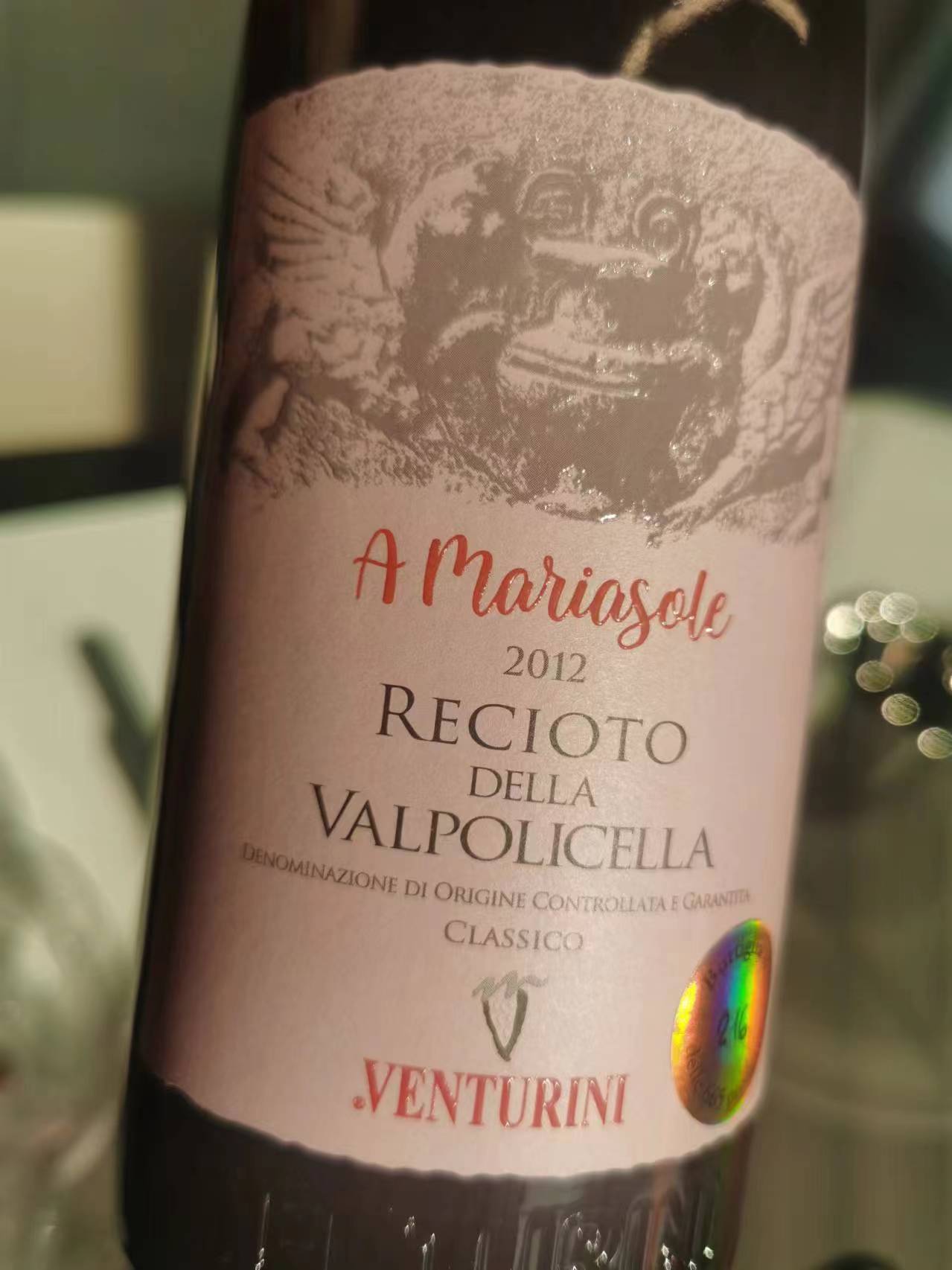
Venturini 2019 Amarone della Valpolicella Classico 94
Bright, vibrant red. Delicate, very pure aromas of sour red cherry, red berries, orange peel and licorice, plus a very strong perfumed note of violet. Juicy, spicy and fresh in the mouth, with lovely subtle perfume accentuated by minerality and harmonious lively acidity. Not especially dense but rather intense, wonderfully vinous and light on its feet, finishing very long and pure. Boasts about 16.5% alcohol but this is so well-balanced that you can’t tell the octanes are really so high. Made with carefully selected grapes that were air-dried for 120 days, this is a blend of 75% Corvina and Corvina plus 25% Rondinella and 5% Molinara that spent two years in 500 liter and 3000-5000 liter oak barrels (an one even larger barrel). This is a politely-styled, lovely Amarone that is gentler than most: it will drink well relatively early, but also last for another decade in a good cellar. Drinking window: 2025-2033.
Venturini 2018 Amarone della Valpolicella Classico Campomasua 93
Good full red ruby. Very pretty aromas and flavours of juicy red berries, rose, violet, peach and a hint of iron shavings. Sweet and spicy on entr, then tougher and more austere in the middle and on the close, but the aftertaste is juicy and fresh, featuring repeating nuances of rose and violet. The grapes come from roughly 45 years old vines planted on a lightly limestone soil in the Campomasua vineyard at 250 meters asl. Only about 10,000 bottles/year made. Ages for about 36 months in Slavonian 3000 liter barrels and 500 liters French oak tonneaux, then another twelve in bottle before going on sale. Drinking window: 2027-2035.
Venturini 2011 Amarone della Valpolicella Riserva 96
Fully saturated red. Musky aromas of strawberry, red cherry macerated in alcohol, dried flowers, and tobacco. Sweet and fine-grained, with good volume and a silky texture to the flavours of strawberry liqueur, candied violet, minerals and underbrush. Not at all heavy, this spreads out nicely on the back, finishing long with ripe, tannins and good grip. A little bit of youthful oakiness still showing that will resolve in due course. There were only 1400 bottles of this limited-edition wine made; it is yet another very pretty wine in the typical Venturini style where lightness of being is just as important as sheer power. Clocks in at a whopping 17%, but like all Venturini wines is so well-balanced that it really doesn’t seem to be so rich in alcohol. The grapes were air-dried for a whopping six months (with all the sugar they must have loaded up on, it’s no wonder that the wine has 17% alcohol) and the wine spent five years in French oak tonneaux. First made in the 2001vintage, this wine is only made in the best vintages (other vintages include the 2005, ’07, ’09, ‘11 and ’12). Note that Venturini never releases a Riserva wine before ten years since the vintage; this year (2024) they will come out with the 2012 Riserva. Drinking window: 2025-2040.
Venturini 2012 Recioto della Valpolicella Classico A Mariasole 94
Medium red with garnet highlights. At once floral and spicy (cloves, cinnamon), with very fresh, crunchy red berry, sweet spice and red cherry nectar aromas and flavours, complicated by a note of candied violet. I like how remarkably well-delineated and remarkably light on its feet this is. Very clean and long on the fresh, very sweet, but not jammy finish. This aged 10 years in demijohn and saw no oak whatsoever. Mariasole is the name of Alessandro Venturini’s daughter. Drinking window: 2024-2032.
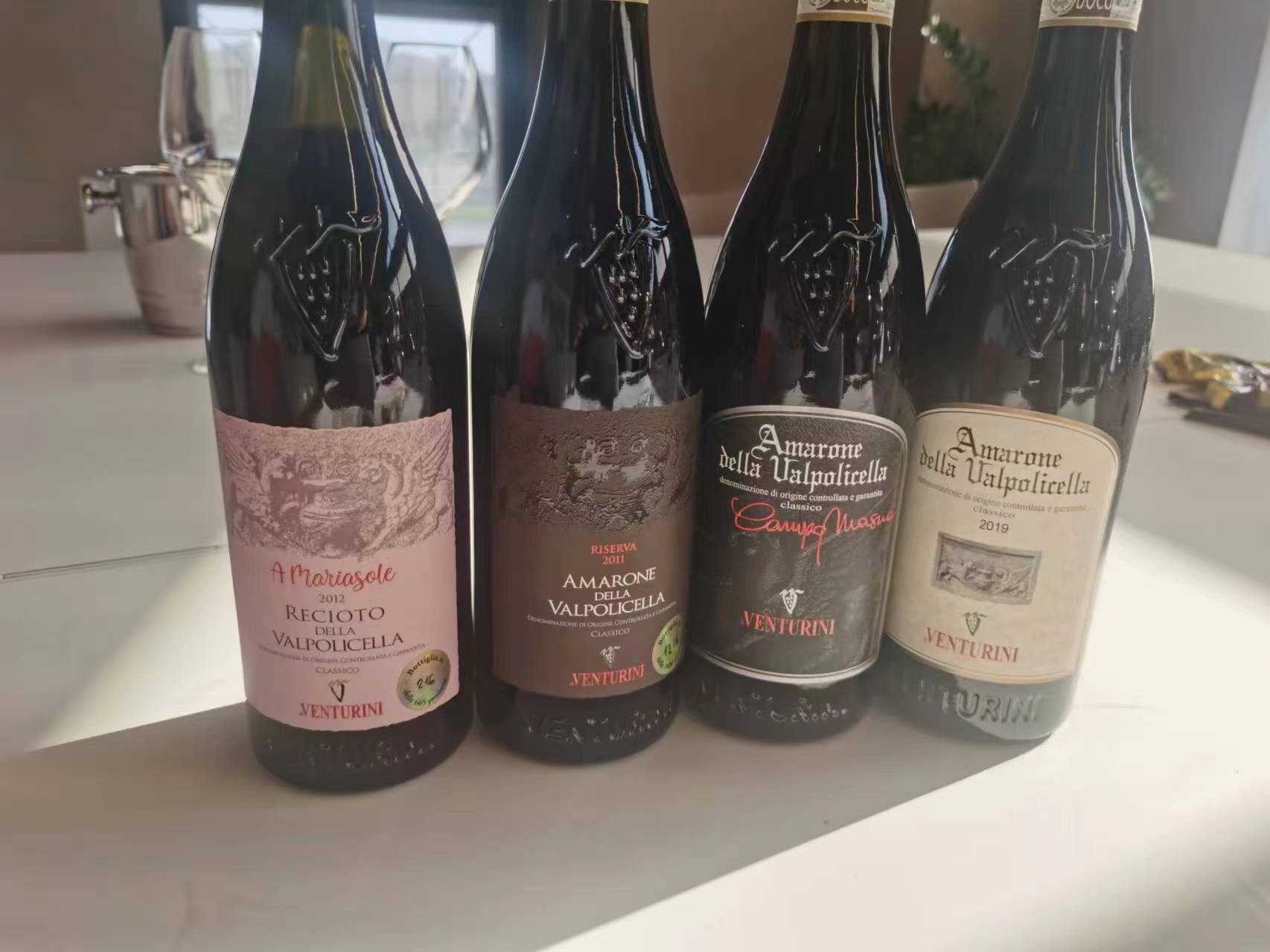
Zenato.
Founded in 1960 by Sergio Zenato, the estate is now run by his children Alberto (in charge of wine production) and Nadia (sales and marketing). Unlike other Amarone houses, white wines are also very important for Zenato, given their leading role in Lugana production (where they own Tenuta Santa Cristina). The family owns a little less than 100 hectares of vineyards, but also rent others, so as to farm in total about 250 hectares of vines, and not just in Veneto (Zenato also owns Podere Prospero in Bolgheri).
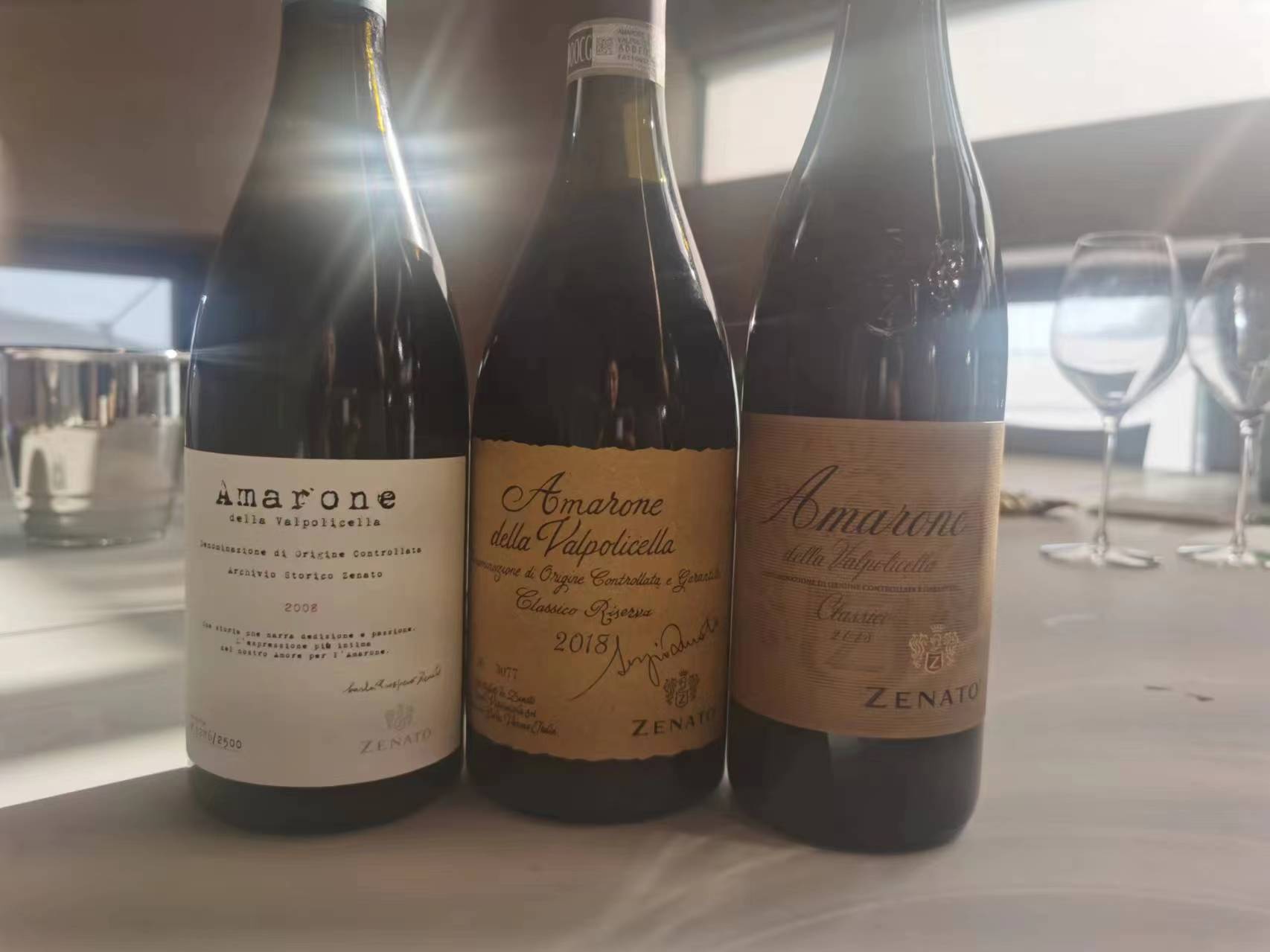
Zenato 2018 Amarone della Valpolicella Classico 93
Medium-dark red colour. Sour red cherry, blackberry and botanicals on the nose. Enters clean and fresh, with pure red fruit and herbal flavours, then turns more textured in the middle, before becoming lithe and lively again on the finish, marked by relatively high acidity that will make you mouth water. Not as concentrated as the 2018 Riserva, but I like this classic Amarone’s balance. A blend of 70% Corvina, 25% Corvinone and Rondinella, with 5% Croatina and Oseleta, this is aged for three years in both large oak barrels (about two thirds of the total) and smaller 500 and 300 liter tonneaux (the remaining one third). Drinking window: 2025-2032.
Zenato 2018 Amarone della Valpolicella Riserva Sergio Zenato 93
Good full opaque ruby-red. Aromas of dark plum, raisins, smoke and vanilla. Coffee and cocoa complement plum, raisin and smoky blackberry in the mouth, with a long close featuring a little spicy nuance including a late hit of peppery tannins. Deep, rich and spicy, this is an excellent Amarone that will age well, but I think the less than stellar 2018 vintage didn’t allow for this Riserva to outshine the regular Amarone wines like it normally would have. About 90 % Corvina and Corvinone with very little Rondinella and even less Croatina and Oseleta from very old vines. Aged aged for four years in barrel and one in bottle. Only 10-12% of Zenato’s yearly Amarone production is tagged to be a Riserva. Drinking window: 2026-2035.
Zenato 2008 Amarone della Valpolicella Archivio Storico 96
Deep ruby with a pale rim. Very elegant yet rich and ripe, boasting suave tannins that nicely frame the red fruit and tobacco flavours on the peppery finish. Tobacco and incense are also very noticeable on the long back end, descriptors that are typical of Zenato’s older Amarone wine such as this one. This is a blend of 80% Corvina and Corvinone and 10% Rondinella, with the remaining 10% of Croatina and Oseleta. Released for sale only after ten years of aging (and only 2500 bottles, plus 400 magnums), the next Archivio Storico to be released will be the 2013. Drinking window: 2024-2038.
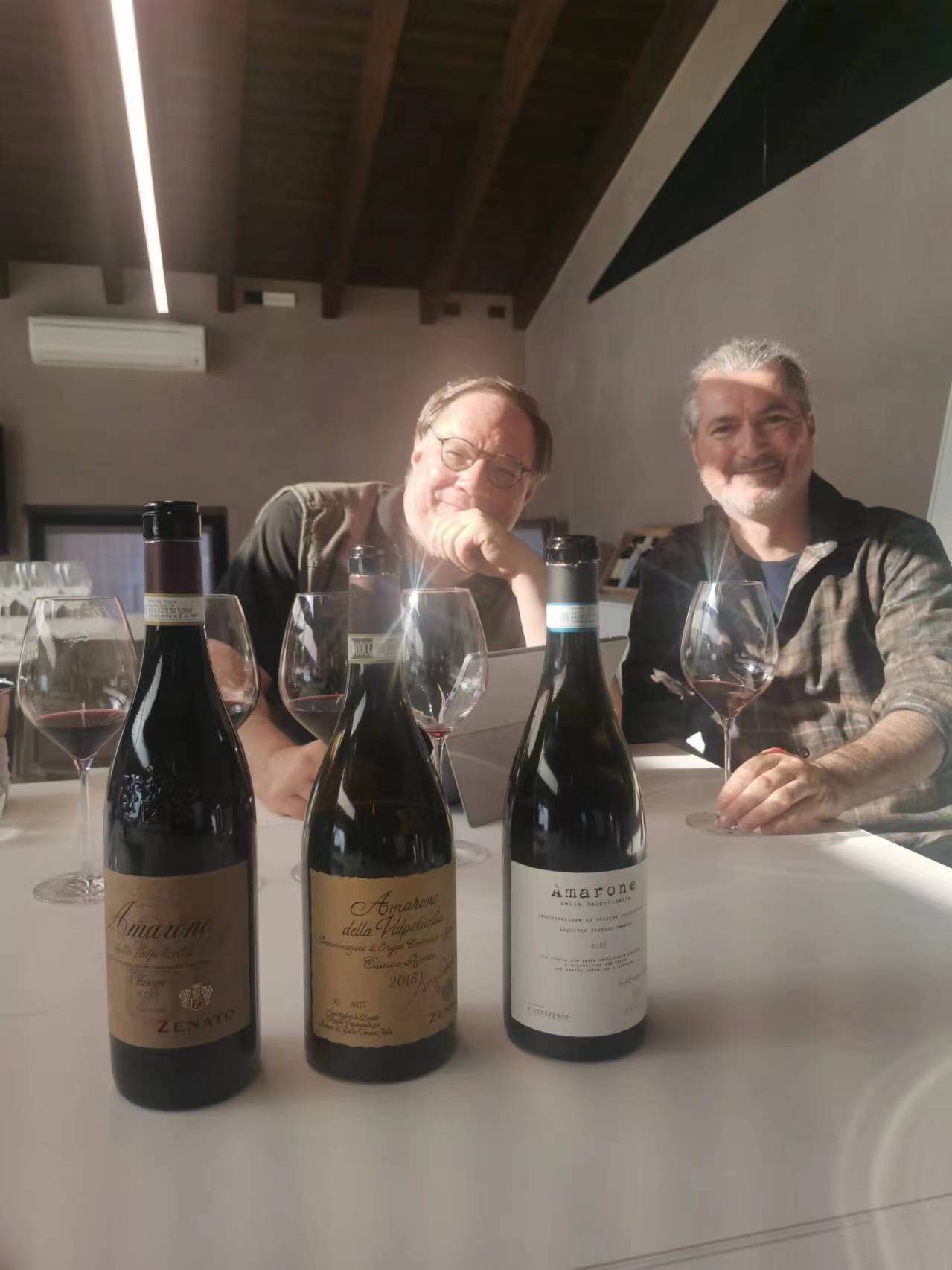

 中文
中文



